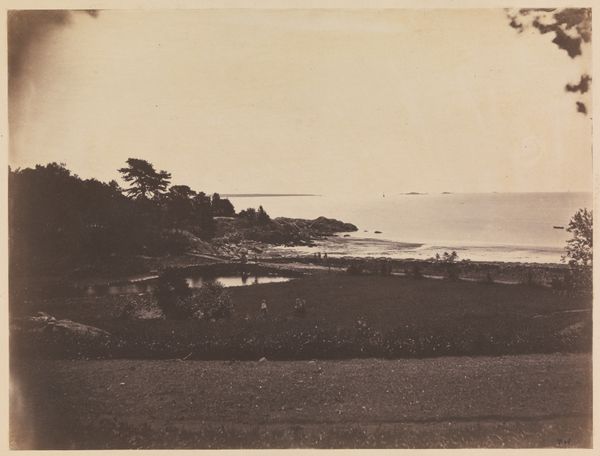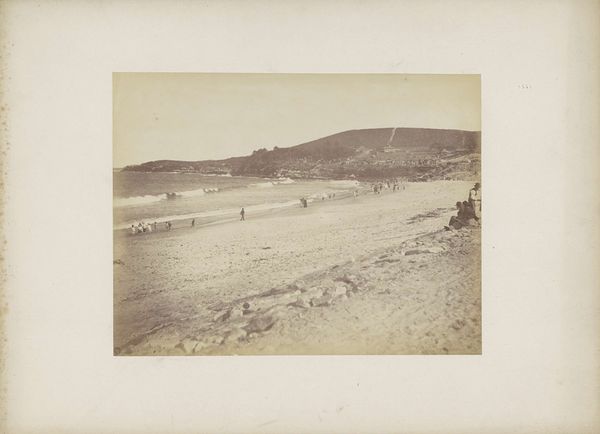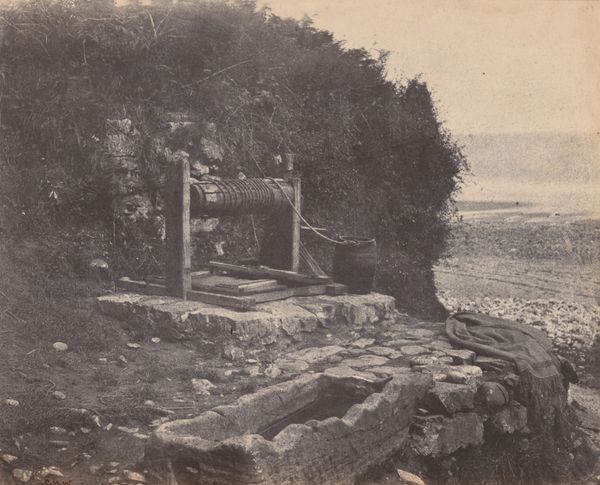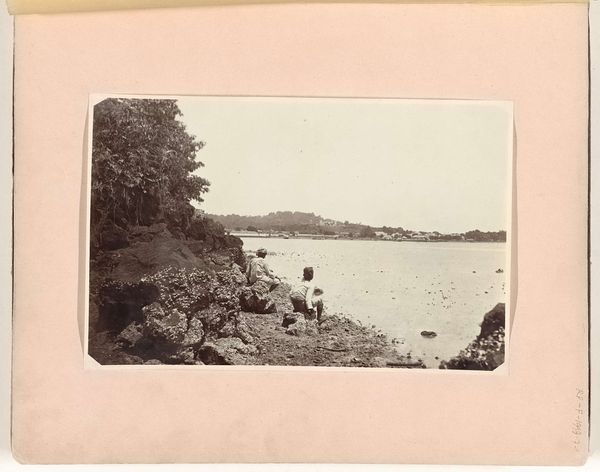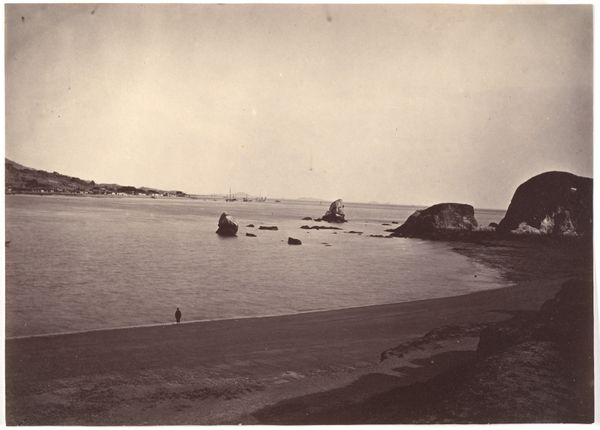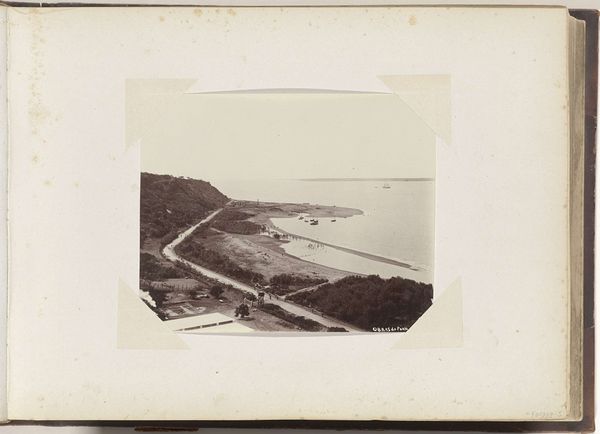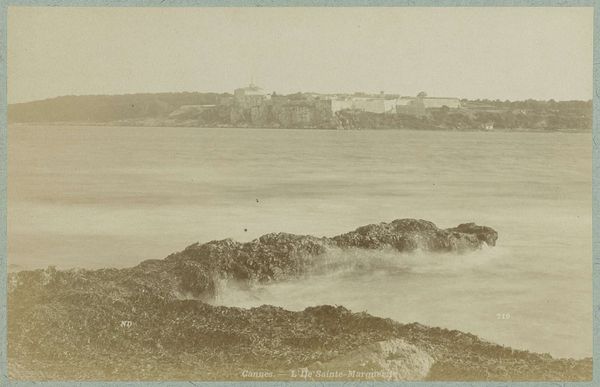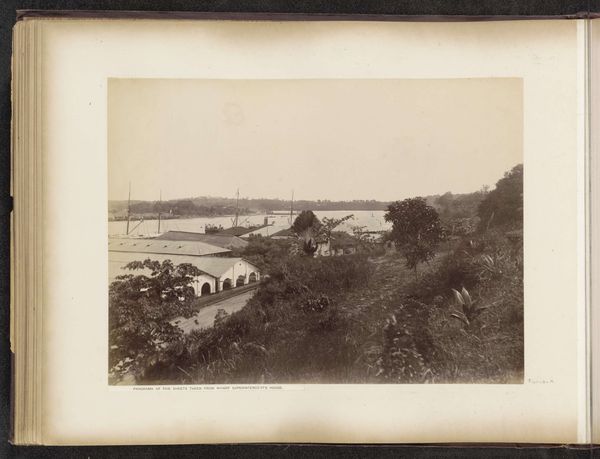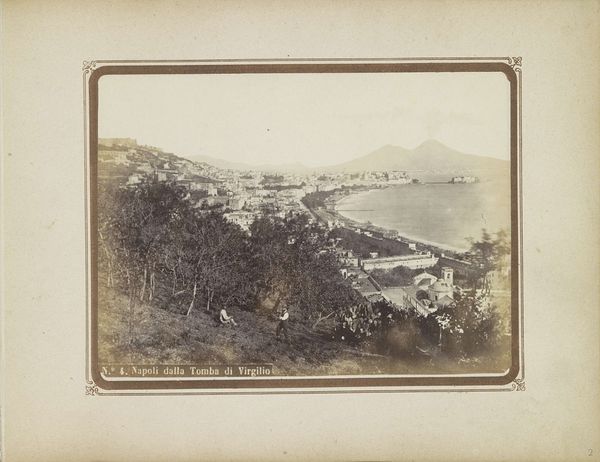
Strand en badgasten aan de voet van Mount Palmer (Mount Parsee, Parsee Hill) bij Singapore c. 1870 - 1910
0:00
0:00
photography, albumen-print
#
landscape
#
photography
#
orientalism
#
genre-painting
#
albumen-print
Dimensions: height 241 mm, width 329 mm
Copyright: Rijks Museum: Open Domain
Editor: Here we have a lovely albumen print from G.R. Lambert & Co., titled "Strand en badgasten aan de voet van Mount Palmer bij Singapore," dating from around 1870 to 1910. The tones are very sepia. What immediately strikes me is the division of the scene – the tranquil bathers contrasted with those observing at the foot of Mount Palmer. How would you interpret this photograph? Curator: Indeed. Disregarding anecdotal narrative, observe how the photographer structures the visual plane. Note the strategic placement of figures and the natural architecture: mountain and coastline. What significance emerges from the visual hierarchy inherent within the frame? Editor: Are you suggesting the positioning of figures is as important as what the photograph documents? Curator: Precisely. Semiotics suggests the image’s syntax guides interpretation, independent of specific context. How does the play of light and shadow sculpt form and contribute to the overall composition? Consider how formal elements – lines, shapes, values – direct the eye and orchestrate visual balance. Editor: The strong diagonal created by the slope, and the gentle curve of the coastline. The darker figures in the sand… do they create rhythm through contrast? Curator: An astute observation. That interplay and rhythm serves to harmonize the composition. Consider too the spatial relationships. Is it a dynamic or a static rendering? Editor: The figures imply activity but their hazy form freezes them, doesn’t it? The perspective gives it stillness, balance, serenity… Curator: The photographer clearly demonstrates proficiency, doesn't it? Mastering light, contrast and form? Now, returning to your first point, let’s consider these formal relations with a view of Singapore during the colonial era and the dynamics that this contrast generates. Editor: I see, it’s fascinating to consider the image as both a study of form, and through historical lenses. I'll never view photos the same way!
Comments
No comments
Be the first to comment and join the conversation on the ultimate creative platform.
